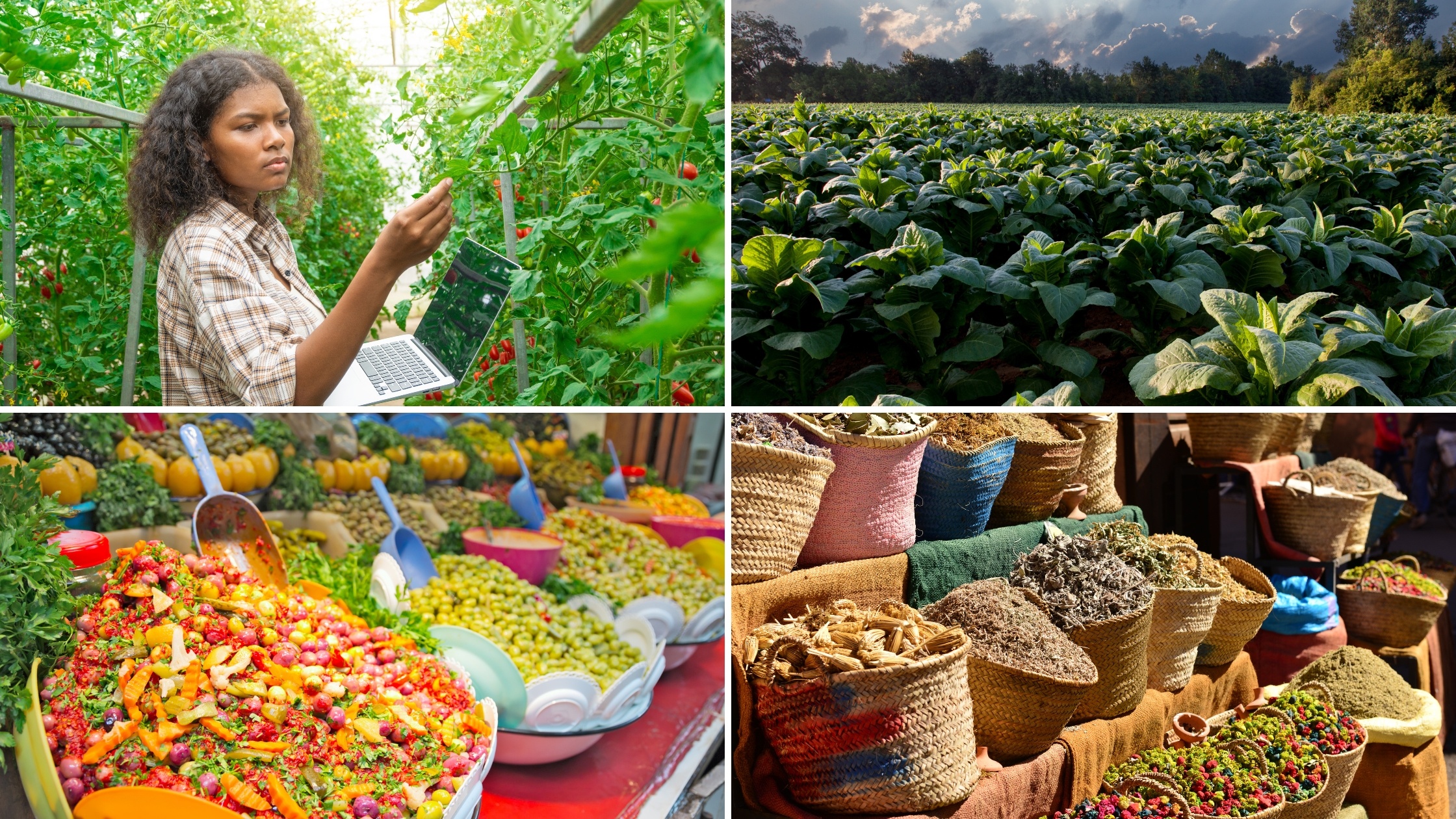Sub-Saharan Africa is facing growing food insecurity, exacerbated by climate change. Prolonged droughts, unpredictable floods, soil degradation, and loss of biodiversity threaten agricultural production and undermine the livelihoods of populations. As agriculture remains the main source of income for more than 60% of Africans (FAO, 2021), it is urgent to adopt resilient strategies to ensure food security. Far from being limited to agricultural production, this issue also encompasses the transformation of food systems and the adoption of innovations tailored to local realities. This article explores three key areas: the adoption of climate-adapted agricultural practices, the valorization of local food systems, and technological innovation as a driver of resilience.
Agriculture Adapted to Climatic Realities
African agriculture needs to evolve to better cope with climate variations and environmental stresses. In an increasingly climate-extreme context, it is essential to implement agricultural practices that ensure stable production while minimizing environmental impact. Climate-smart agriculture (CSA) represents a promising approach based on three pillars (World Bank, 2022).
Firstly, optimizing agricultural practices improves productivity without depleting natural resources. Crop diversification, using drought-resistant varieties (millet, sorghum, cowpea), provides an effective response to limit losses caused by extreme climate events. These crops, adapted to arid conditions, require less water and are more resistant to diseases and pests. Agroforestry, which combines agricultural crops and tree plantations, also contributes to the resilience of agricultural ecosystems by preventing soil erosion, improving soil fertility, and reducing water evaporation. Initiatives in the Sahel show that introducing fertilizer trees, such as Faidherbia albida, significantly increases cereal crop yields.
Next, effective water management is a crucial challenge. Drip irrigation, although underutilized due to its cost, offers a sustainable solution to reduce water consumption and maximize crop efficiency. Additionally, rainwater harvesting and the creation of retention basins secure water supplies, particularly in arid regions. Furthermore, techniques for soil moisture conservation, such as mulching and the zaï method (a traditional Burkinabé technique involving small pits to capture rainwater and promote plant growth), have proven effective in improving agricultural yields in the Sahel.
Finally, strengthening farmers' capacities is key to facilitating effective adaptation to new climatic realities. Training programs in agroecological practices, supported by institutions like FAO and CIRAD, enable smallholders to adopt more sustainable and resilient methods. Access to information, including through mobile apps providing real-time agronomic advice, also facilitates the adoption of techniques adapted to local conditions.
Developing Local and Sustainable Food Systems
Africa is still heavily dependent on food imports, exposing its populations to global price fluctuations and supply crises. In 2022, food imports to the continent reached 45 billion dollars (AfDB, 2022). To reduce this dependence and strengthen food security, it is crucial to valorize local food systems and develop more resilient distribution circuits.
Promoting short circuits is a key lever for strengthening the food autonomy of rural and urban communities. By reducing the distance between producers and consumers, these circuits help minimize transportation costs and reduce the carbon footprint of food products. In several West African countries, local initiatives encourage the consumption of products from family farming, thereby boosting the local economy and ensuring more stable incomes for producers.
Furthermore, the local processing of agricultural products is an effective solution to limit post-harvest losses and add value to local productions. Currently, in sub-Saharan Africa, up to 30% of food crops are lost due to a lack of storage and conservation infrastructure (WFP, 2023). Investing in suitable infrastructure, such as hermetic silos and solar cold rooms, would extend the shelf life of goods and ensure greater availability of food in local markets. Initiatives developed in Kenya and Ethiopia, where community processing centers turn agricultural products into flour, juice, or canned goods, illustrate the importance of this approach.
Agricultural cooperatives also play a key role in structuring local food chains. They facilitate access to markets and financing, enabling small producers to better value their crops. In Côte d'Ivoire, women’s cooperatives specializing in processing cassava into attiéké benefit from training and easier access to credit, allowing them to increase their production and diversify their income sources.
Technological Innovation: A Lever for Resilience
New technologies play a critical role in improving agricultural productivity and managing climate risks. Thanks to digital and biotechnological innovations, farmers today can better anticipate climate hazards and optimize their practices.
Digital agriculture is transforming how producers access information and agricultural services. Platforms like WeFarm and Hello Tractor enable farmers to receive precise weather forecasts, personalized agronomic advice, and easier access to agricultural equipment through shared tractors (CTA, 2022). Integrating these tools into agricultural strategies makes it possible to optimize production cycles and anticipate periods of water stress or crop diseases.
Climate-resistant seed banks are another key innovation to guarantee food resilience. In the face of agricultural biodiversity loss, centers like the African Biodiversity Center work to preserve and disseminate seed varieties adapted to new climatic conditions. In Ethiopia, an initiative has restored over 1,500 local cereal varieties, offering farmers a wide range of options suited to their environment.
Finally, innovative storage and conservation solutions help reduce food losses and improve the availability of goods. The use of hermetic silos and solar cold rooms in several East African countries has extended the shelf life of cereals and fruits, reducing post-harvest losses by 20-30% (FAO, 2023).
Conclusion
Strengthening food resilience in Africa against climate hazards requires a multidimensional approach combining climate-adapted agricultural practices, the valorization of local food systems, and the rise of technological innovation. Food insecurity is not a fatality; it can be mitigated through sustainable and inclusive solutions involving local actors, public institutions, and the private sector. To ensure sustainable food security, it is crucial to support farmers, promote appropriate agricultural policies, and strengthen rural infrastructure. By focusing on innovative approaches rooted in local realities, Africa can not only guarantee its food self-sufficiency but also play a key role in tomorrow's global agriculture.
Bibliography and References
African Development Bank Group. (2018). Feeding Africa: Ensuring Africa’s Agricultural Transformation.
FAO. (2018). Strengthening Resilience to Climate Change for Food Security and Nutrition.
FAO. (2021). Strengthening Food Security in Africa.
Annual Review of Development Effectiveness (ARDE). (2024). Chapter 2: Feeding Africa.


